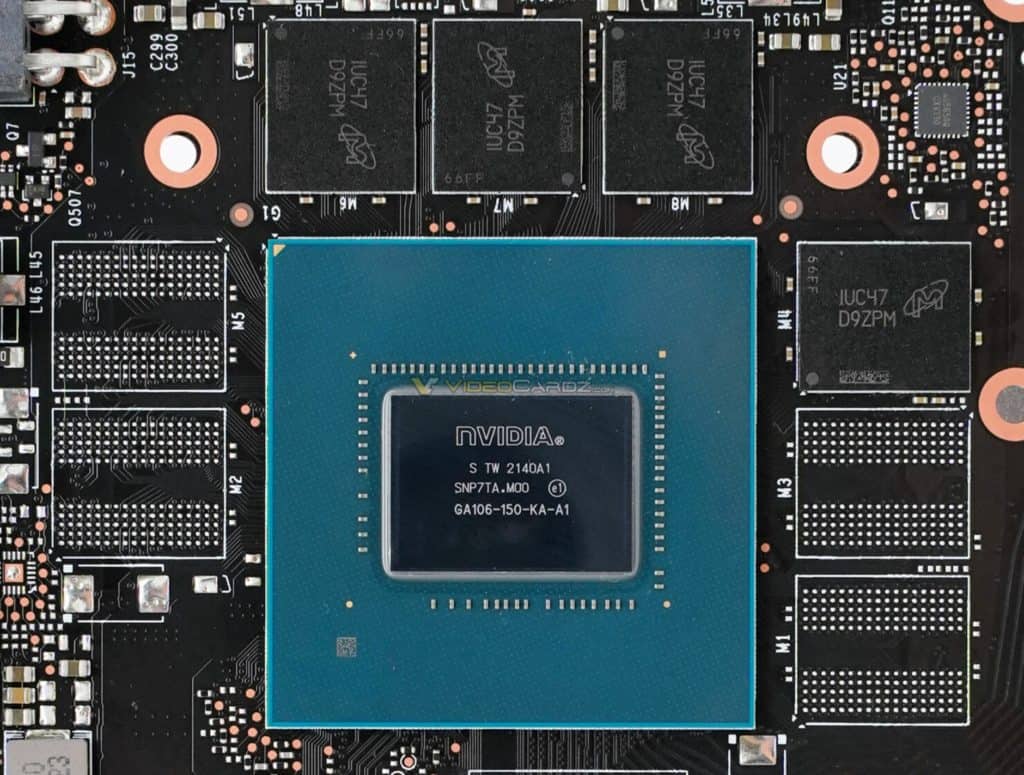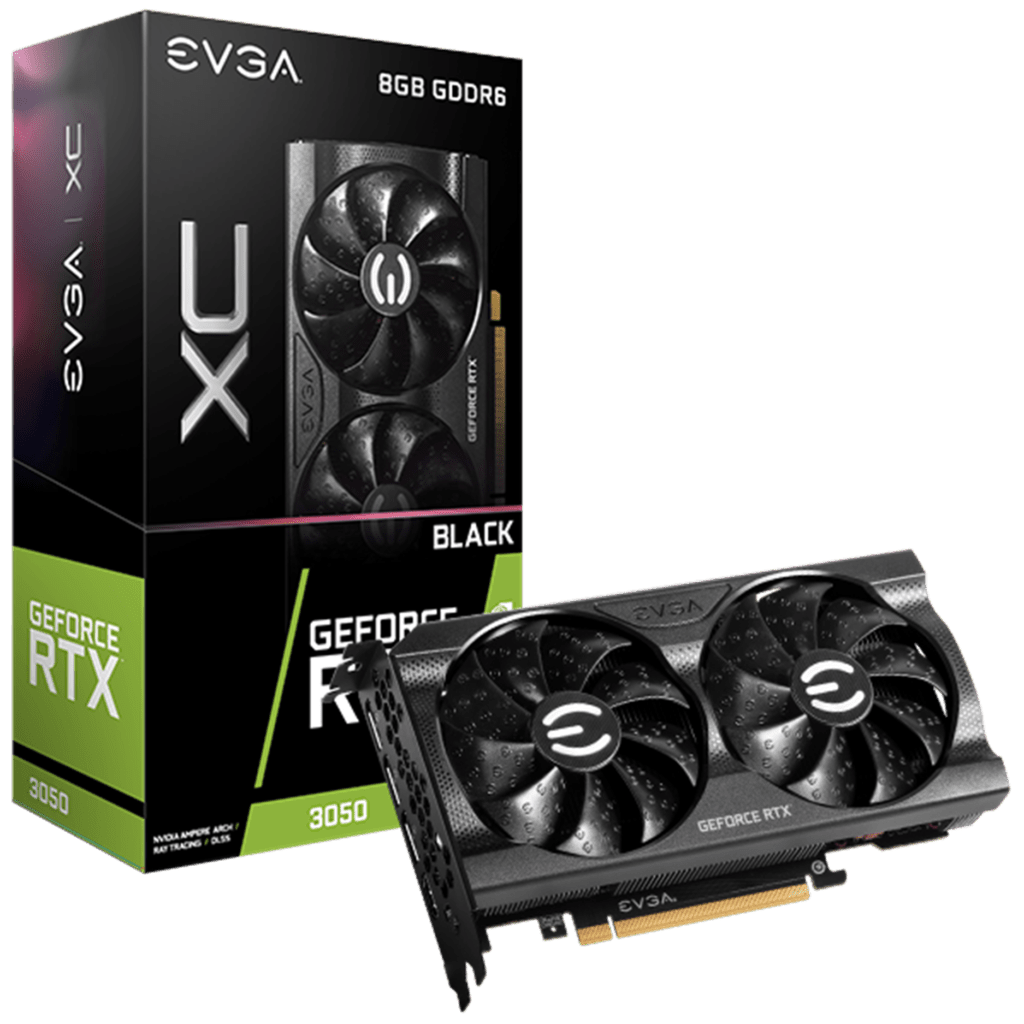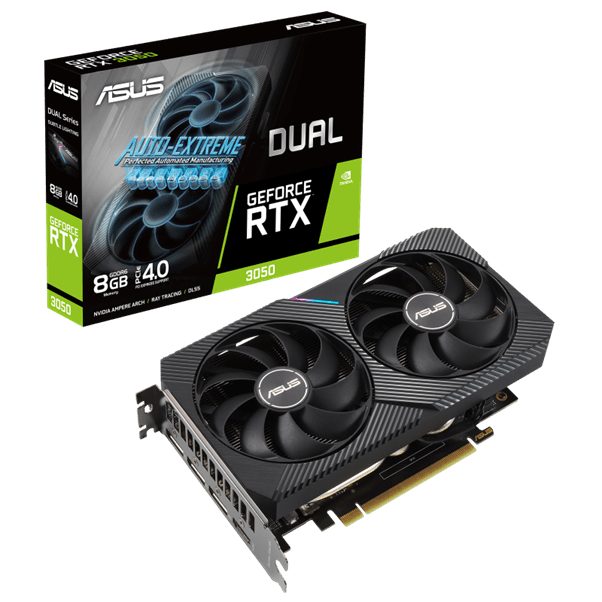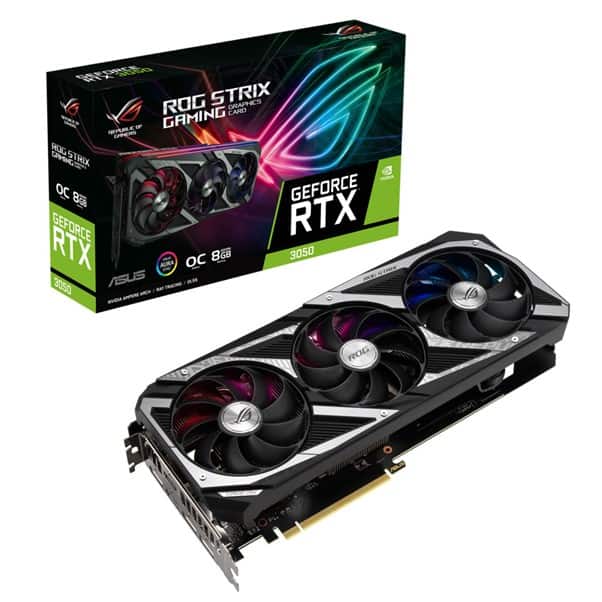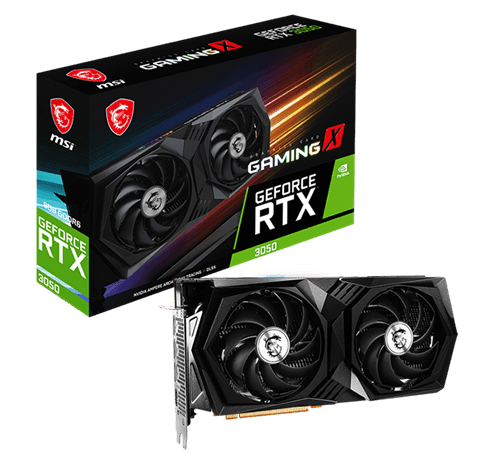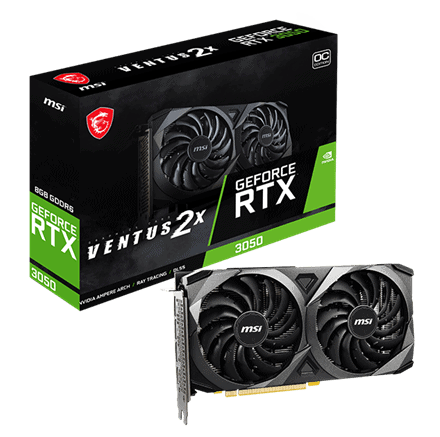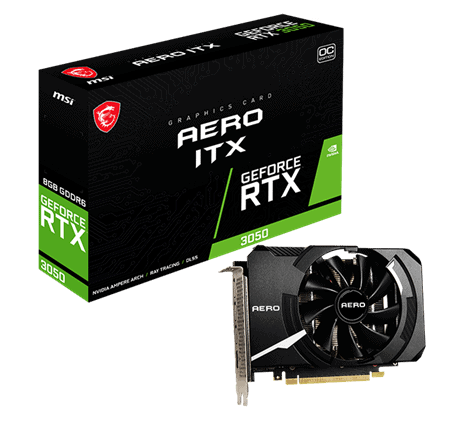Introduced at the start of 2022 by NVIDIA, the NVIDIA GeForce RTX 3050 8GB GDDR6 is recognized as an entry-level graphics card. In terms of gaming performance, it compares favorably with its predecessor, the GTX 1660 Ti, offering solid results for gaming at 1080p resolution. But how about its performance in mining? What can be said about the capabilities of the RTX 3050 8GB in this context?
For more information about the specifications, overclock settings, and hashrates of the RTX 3050 8GB for different algorithms, keep reading.
NVIDIA GeForce RTX 3050 8GB Specifications:
| NVIDIA CUDA® Cores: | 2560 |
| Tensor Cores: | 80 |
| RT Cores: | 20 |
| Single Precision Performance: | 9.098 TFLOPS |
| Base Clock: | 1777 MHz |
| Boost Clock: | 1552 MHz |
| Memory Speed: | 14 Gbps |
| Standard Memory Config: | 8 GB GDDR6 |
| Memory Interface Width: | 128-bit |
| Memory Bandwidth: | 224.0 GB/sec |
| Maximum Digital Resolution: | 7680×4320 @60Hz |
| Graphics Card Dimensions: | Length : 9.5″ – Width : 4.4” – Slot Width : Dual-slot |
| Graphics Card Power: | 130 W |
| Maximum GPU temperature: | 93 °C |
| Recommended System Power: | 550 W |
| System Interface: | PCI Express 4.0 x8 |
| Power Connectors: | 1x 8-pin |
| Display Connectors: | 1x HDMI, 3x DisplayPort |
NVIDIA GeForce RTX 3050 8GB mining hashrate for each algorithm tested by Red Panda Mining [Scroll right for more]:
| Coin | Algorithm | Hashrate | Watts (Software) | Watts (ElmorLabs PMD) | Hash/Watt | Overclock/Undervolt Settings MSI Afterburner | Mining Software Used |
| Dual ETH + Alephium | Ethash + Blake3 | nonstop unlocking | N/A | N/A | N/A | N/A | T-rex Miner 0.25.6 |
| Ethereum | Ethash | 15.27 | 85 | 100 | 15.27% | Stock | Gminer 2.78 |
| Ethereum | Ethash | keeps unlocking | N/A | N/A | N/A | 0 core, +800 memory, 60 fan | Gminer 2.78 |
| Ethereum | Ethash | 12.96 | 46 | 56 | 23.14% | batch file –lock_cclock 1000 | Gminer 2.78 |
| Ethereum | Ethash | keeps unlocking | N/A | N/A | N/A | batch file –lock_cclock 1000 –mclock 1000 | Gminer 2.78 |
| Ravencoin | Kawpow | 12.48 | 120 | Riser 37w/GPU 95w | 10.40% | Stock | Gminer 2.78 |
| Ravencoin | Kawpow | 13.72 | 110 | Riser 24w/GPU 77w | 12.47% | 76% pl, +100 core, +800 memory | Gminer 2.78 |
| Ravencoin | Kawpow | 10.13 | 58 | Riser 11w/GPU 52w | 17.47% | batch file –lock_cclock 1000 | Gminer 2.78 |
| Aeternity | Cuckoo29 | 4.83 | 100 | Riser 30w/GPU 78w | 4.83% | Stock | Gminer 2.78 |
| Aeternity | Cuckoo29 | 4.86 | 99 | Riser 28w/GPU 74w | 4.91% | 76% pl, +100 core, +800 memory | Gminer 2.78 |
| Aion | Equihash 192.7 | 186 | 100 | Riser 28w/GPU 74w | 186.00% | 76% pl, +100 core, +800 memory | Gminer 2.78 |
| Aion | Equihash 192.7 | 100 | 47 | Riser 9w/GPU 38w | 212.77% | batch file –lock_cclock 1000 | Gminer 2.78 |
| Flux | Equihash 125.4 | 25.5 | 99 | Riser 27w/GPU 72w | 25.76% | Stock | Gminer 2.78 |
| Flux | Equihash 125.4 | 21.4 | 99 | Riser 27w/GPU 72w | 21.62% | Stock | Lolminer 1.42 |
| Flux | Equihash 125.4 | 21.6 | 99 | Riser 27w/GPU 72w | 21.82% | Stock | Mini-z 1.8y4rc2 |
| Flux | Equihash 192.7 | 27 | 99 | Riser 27w/GPU 72w | 27.27% | 76% pl, +100 core, +800 memory | Gminer 2.78 |
| Flux | Equihash 192.7 | 13.5 | 49 | Riser 8w/GPU 42w | 27.55% | batch file –lock_cclock 1000 | Gminer 2.78 |
| Flux | Equihash 192.7 | 15.3 | 50 | Riser 9w/GPU 43w | 30.60% | batch file –lock_cclock 1000 –mclock 1000 | Gminer 2.78 |
| Ton | SHA256TON | 1224 | 98.3 | Riser 35/GPU 68w | 1245.17% | Stock | Gminer 2.78 |
| Ergo | Autolykos | 40.13 | 74.6 | Riser 14/GPU 62w | 53.79% | Stock | Gminer 2.78 |
| Ergo | Autolykos | 40.01 | 59 | Riser 13/GPU 47w | 67.81% | Stock | NBminer 40.1 |
| Conflux | Octopus | 23.32 | 99 | Riser 22w/GPU 75w | 23.56% | Stock | NBminer 40.1 |
| Firo | Firopow | 12.3 | 116 | Riser 36w/GPU 94w | 10.60% | Stock | T-rex Miner 0.25.6 |
| Ryo/Conceal | CNGPU | 510 | 75 | Riser 14w/GPU 61w | 680.00% | 76% PL, +100 Core, +1000 Memory | XMRstak 2.10.8 |
| Beam | Beamhash III | 15.1 | 110 | Riser 32w/GPU 78w | 13.73% | Stock | Gminer 2.78 |
NVIDIA GeForce RTX 3050 8GB mining hashrate for each algorithm: [ Power Consumption 55 Watts/Hour ] tested by NiceHash :
| DaggerHashimoto [ EtHash : (ETH) & (ETC) ] Ethereum Mining Hashrate: | 14 MH/s |
| Octopus Mining Hashrate: | 25 MH/s |
| KAWPOW Mining Hashrate: | 13 MH/s |
| Autolylos Mining Hashrate: | 60 MH/s |
| ZelHash Mining Hashrate: | 22.4 Sol/s |
The NVIDIA RTX 3050 is considered an entry-level card for cryptocurrency mining. It’s a decent option for those looking to start mining at home. It consumes less power, is cheaper, and is seemingly in regular supply than the other NVIDIA RTX 30 Series cards.
However, for those looking to build complex and highly profitable mining rigs, the NVIDIA RTX 3050 is not great. The card features the Lite Hash Rate (LHR) algorithm, which is a technology introduced by NVIDIA to limit the card’s mining performance. Hence, it is not recommended to purchase these cards for mining unless you can get them for a low price. You would be better off buying the other more advanced cards in the NVIDIA RTX 30 and 20 Series.
There is news about a weaker variant of the RTX 3050. The weaker version reportedly has 4GB VRAM instead of 8GB VRAM, which means that it would fare even worse in mining performance. On the other hand, there are rumors about a Ti variant of the RTX 3050. This version of the card is alleged to have 6GB or 12 GB of VRAM and 3072 CUDA cores, possibly offering improved gaming performance.
Nonetheless, these new RTX 3050 variants would probably come with LHR technology like most new NVIDIA cards. Thus, users should be prepared and not have unrealistic expectations of the mining performance. Moreover, the global chip shortage and GPU market situation are still relatively terrible. Many cards, including the RTX 3050, are still unavailable. Even if one is found, it will definitely come with a hefty price tag, usually much higher than the MSRP.
NVIDIA GeForce RTX 3050 8GB Mining Review :
Different versions of NVIDIA GeForce RTX 3050 8GB from top manufacturers :



